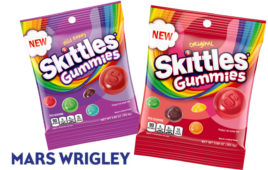Simple steps like monitoring temperatures and automating labels can go a long way in preventing food safety issues.
By Ryan Yost
Each year, more than 48 million Americans are sickened from food poisoning. The culprits? Listeria, E. coli, salmonella and, more recently, cyclosporiasis, which this summer made more than 500 quick-service restaurant (QSR) customers sick after they ate pre-packaged salads at locations across the U.S.
Grocery chains and convenience stores are just as vulnerable, particularly when selling grab-and-go items like sandwiches, salads, wraps and desserts.
It not only hurts your brand and location (tremendously!) but you lose the trust of your customers, and often potential customers, when word spreads. We haven’t even mentioned the loss of inventory. After all, if you get a report of food contamination, you’ll often end up purging more than the offending item once you realize you have food safety issues. On average, refrigerated inventory at any time is valued at up to $10,000 in restaurants and retail stores.
How can you protect yourself? Here are a few things to check—and double check.
• Equipment: How cool are your coolers? Don’t know? You need to know at all times the temperature in your coolers. Invest in a temperature tracking system with wireless sensors—most are easy to install—that track temperatures and report to a “gateway” that’s plugged into a centrally located outlet.
The gateway pushes the data to the cloud where employees can access it through various devices. Stand-alone systems are available that don’t involve Wi-Fi networks. Employees know right away if temperatures are fluctuating out of normal ranges; they’ll receive alerts through Apple, Android and Windows smart devices as well as through Windows PCs.
Depending on what you’re cooling—or keeping warm—certain thresholds will need to be maintained in your systems. If those are breached, your system should push out alerts via text and email to designated users, allowing for quick response so employees and operators are ahead of food safety issues before they make people sick.
- Labeling: Still hand-labeling your grab-and-go items? Industry studies have shown not only is hand-labeling time-consuming for your employees—taking them away from other responsibilities like cleaning and helping customers—but handwritten labels often cause confusion that compromises food safety. Maybe that “1” looks like a “7” or that “3” looks like an “8.” When that happens it’s possible an expiration date goes unnoticed, and food stays in the cooler past its expiration date, increasing your chances a customer will purchase the item and get sick.
Better to invest in an automated system that prints easy-to-read labels. As an added bonus, these systems print for each grab-and-go item a list of ingredients, fat and calorie counts and all of the other information mandated as of May 2018 by the U.S. Food and Drug Administration.
- Communication: Invest in a tablet system—some come with portable printers, to allow staff to participate in these processes and track information as they go, including noting food that’s been donated or thrown away. At the start of a new shift, employees can get a printout to see what’s been done and review notes of what’s still left to do. It’s a great way for different shifts to “talk” to each other when they’re not face-to-face.
Know what you’re donating and throwing away will also help you control inventory costs as you’ll start to recognize how much you sell on average during certain seasons and times of day.
Utilize today’s technology and equipment to streamline your perishable food items, remain in compliance and maintain food safety.
Ryan Yost is a general manager for the Printer Solutions Division (PSD) for Avery Dennison Corp. For more information visit www.averydennison.com/food.




